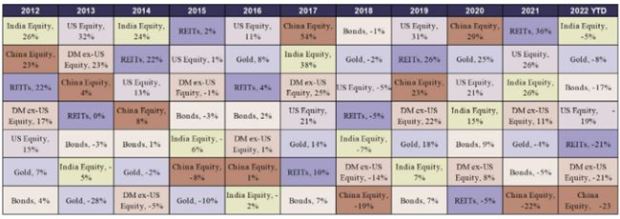In an exclusive interview with Sanjeev Sinha, Ms Sadaf Behbahany, Managing Director, Global Wealth Advisory, Waterfield Advisors, shares her views on the investment options available for Indian investors to invest overseas and the latest trends being witnessed in the market. Excerpts:
What are the various investment options/ instruments/ windows available for Indian investors to invest overseas?
An Indian resident primarily has two routes of investment overseas i) INR-denominated investments through mutual funds, and ii) USD investments through the Liberalised Remittance Scheme (LRS), which is restricted up to the amount of USD 250,000 p.a.
For the INR route in the listed investments, we have several USD mutual funds available, across different geographies, themes and industries. Mainly, these funds are either ETFs or Feeder Funds into the global fund of the same strategy. These investments though are restricted with an overall industry limit of USD 7bn and individual AMC limit too. In Feb this year the industry and several AMCs did cross this limit and hence investments into these strategies were restricted for a few months. Even when the markets corrected, and the overall limit came off, SEBI took a while to approve raising these limits and hence investors missed an opportunity to average their costs. Alternate Investments Funds also have the option of investing up to 25% of their corpus in companies incorporated outside India, that have an ‘India connection’.
The investment USD route through the LRS is defined under FEMA regulations and there are restrictions not only in the amount that can be remitted but also the investments that can be made. From a financial investments portfolio standpoint, most investments use the following avenues for investments – Direct equity, fixed come, mutual funds, alternate investment funds, real estate, etc. are permitted. The same can be made across different currencies. Ideally all leveraged transactions or derivative transactions which may have an MTM impact and requirement of remitting >USD 250,000 are not permitted investments.
The difference between the two investment routes is primarily the building of corpus domestically or offshore. In the former the monies on redemption come back to India and hence families will get the returns but will not have a corpus built outside the country. Also, one needs to keep in mind the risks of investing, costs which are very different from domestic investments, currency movements and taxes in the markets and domicile of investments. Further, a lot of large families ignore the Estate laws in the geography of investments being made.
What are the trends you are seeing with regard to the investments being made by Indians in foreign assets? Where / in which instruments are they investing the most and what is the reason for the same?
Most investors look at the mutual fund route for the domestic INR route. While making investments in global markets through the LRS route, investors invest in direct equity and equity denominated mutual funds primarily. ETFs are the most popular. Most active managers compared to the benchmark have under-performed. SPIVA reports that 90.03% fund managers underperformed the S&P 500 over a 10-year period. Also, the cost of investing in an ETF is much lower than an actively managed fund. One needs to keep in mind the taxes and estate laws in the geography and domicile of investments and investors need to consult their advisors for clarification. For example, investments made through US domiciled funds will be subject to 30% withholding tax on dividends and the non US domiciled have a higher expense ratio due to the smaller corpus. HNI investors should also consult their tax advisors to understand the impact of Estate Laws in countries like the US and UK.
Does it make a wise investment decision to invest abroad compared to investing locally?
It is important to invest in globally diversified portfolios primarily due to volatility and performance in different geographies. Rarely does one market or sector outperform for more than one year and hence as you see in the chart, the Indian market has been a top performer only in 3 years over the last 10 years in USD terms. Also, rupee depreciation adds to the underperformance in Indian markets and hence we advocate investors to explore at least diversifying 10% of their in Global markets (subject to LRS and Mutual Fund industry restrictions).

Which instruments/investment options make it to the top 3 investment ideas for Indians who intend to invest overseas?
WFA – I prefer allocating my funds to the following investment opportunities.
- ETFs – I look at a diversified bucket of global country ETFs – like the S&P 500 & mid-small cap indices in the US and MSCI ACWI for a more diversified portfolio.
- Active Funds – Thematic equity for example considering the technology stocks post the pandemic rally corrected quite aggressively over the last one year. The NASDAQ 100 has corrected over 26.97% YTD.
- Multi-Asset Strategies – One avenue that investors remitting small corpus under LRS should look at is good multi-asset strategies. Investors should understand detailed risks and costs associated with these strategies and ideally explore Ex-India portfolios only.

